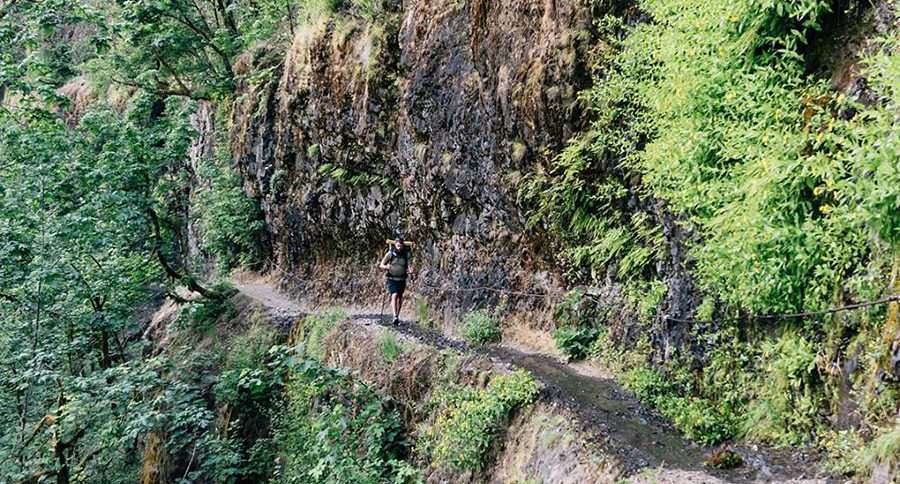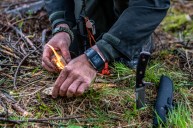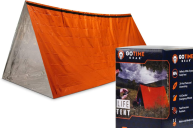Some of you, if not most, are probably familiar with the wilderness Survival Rules of 3. In theory, this collection of preparedness tactics will keep you safe and alive in the vast majority of survival scenarios. Of course, there are always exceptions, which mostly come as a result of an event you would never expect, but these rules have lived on for years because, for the most part, they cover all the bases.
Anyone who's ever found themselves unprepared in a bad situation know the palpable feeling of regret that overtakes them. There's nothing worse than knowing a situation could've been easily avoided with just the slightest amount of foresight.
Benchmade Knife Company knows the importance of the Survival Rules of 3. It's one significant step closer to the ultimate level of outdoorsmanship we all strive for.
There are four levels of concern in the Survival Rules of 3, and here's how it shakes out:
- You can survive for 3 Minutes without air or in icy water
- You can survive for 3 Hours without shelter in a harsh environment (unless in icy water)
- You can survive for 3 Days without water (if sheltered from a harsh environment)
- You can survive for 3 Weeks without food (if you have water and shelter)
With these basic mathematics, you can easily see what's most important, and what you should worry about first if you're presented with a survival situation.
Let's break them down, one by one.
Air
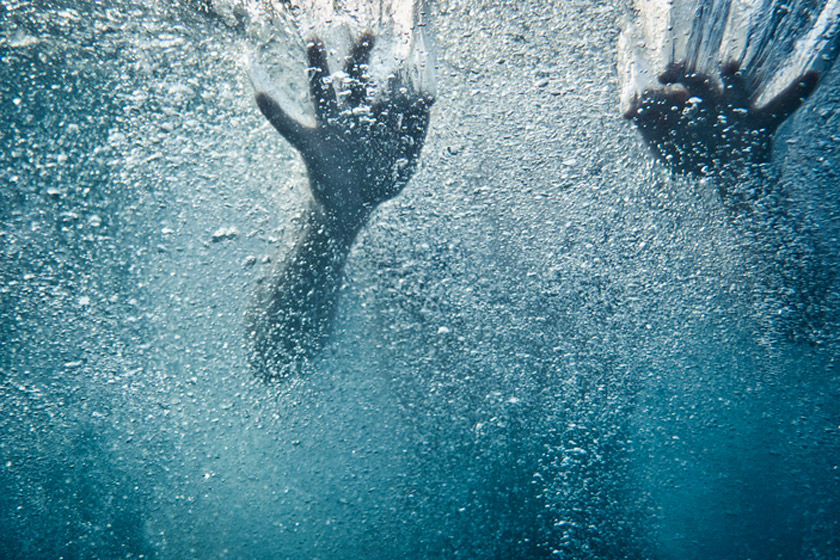
Getty: piranka
Obviously, any condition that threatens breathing or the blood's ability to circulate oxygen is an immediate survival situation. There are, however, a few things you can do to prepare for one of these situations. First thing's first, go ahead and brush up on CPR and the Heimlich Maneuver (including how to do them on yourself, if possible), and refresh to at least a basic understanding of first aid.
Next, learn how to recognize an air-related survival situation as quickly as possible. If you find yourself trapped or locked inside a small space with limited air supply, you want to be able to prioritize keeping calm and slowing your breathing as much as possible.
If there's no immediate way out, a breathing hole should take precedence over an escape. Finding a source of air is far more important in the early stages of one of these scenarios than rushing to find an exit.
Shelter

Getty: Robert Moore
The environment is going to play a major factor, but let's assume most survival situations don't happen on a warm beach. Odds are you're going to be dealing with cold temperatures, wind, rain, or snow, which means you need to find shelter, and quickly. Remember, you've only got three hours to shelter yourself in the toughest conditions.
As long as you're breathing (see above), shelter should take priority over both food and water. A layman wouldn't necessarily assume this, and there have been countless survival stories of folks worrying about what they would eat well before it became a real issue to address.
Even if conditions seem fair, it's still important to establish a shelter if you're forced into survival mode. There are a multitude of styles and forms a wilderness shelter can take, but sometimes simple is better. Use fallen trees as a starting point, as their size can often create nooks and crannies after they've hit the ground, which can serve as the skeleton of your eventual shelter.
Bringing packable survival blankets or tarps is possibly one of the best ways to stay ahead of the game. Paracord and a good knife are essential for shelter creation, as you'd be surprised what you can become capable of with only a sharp blade and some cord as construction tools. Without both, which are about as packable as backcountry supplies come, sheltering yourself can become very difficult.
Water
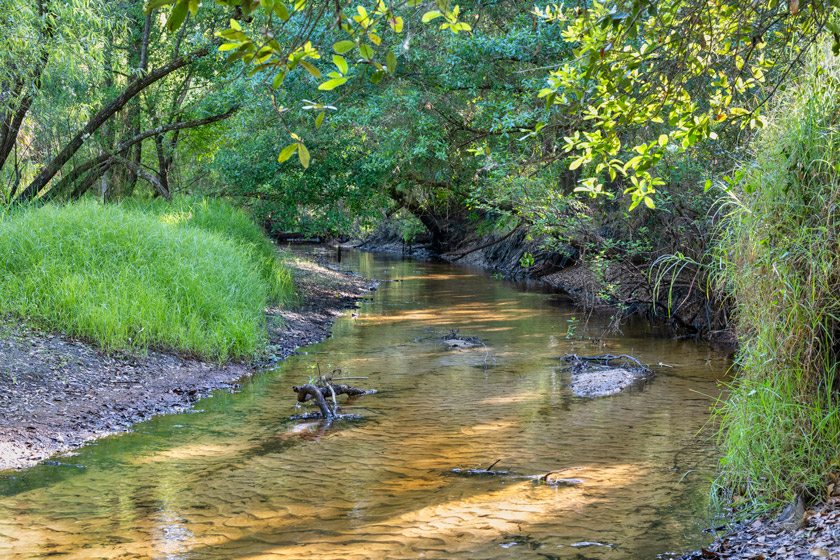
Getty: Thomas Kloc
Water (and by water, we mean clean water) trumps food in the Survival Rules of 3, making a durable bottle and a purifier both necessities. Finding a natural source of water can help immensely, but you can't always rely on it. And, even though water is tough to pack and quickly adds a lot of weight, it's always worth bringing more than you think you'll need.
By packing a purifier, you can clean any water you might find nearby.
Food
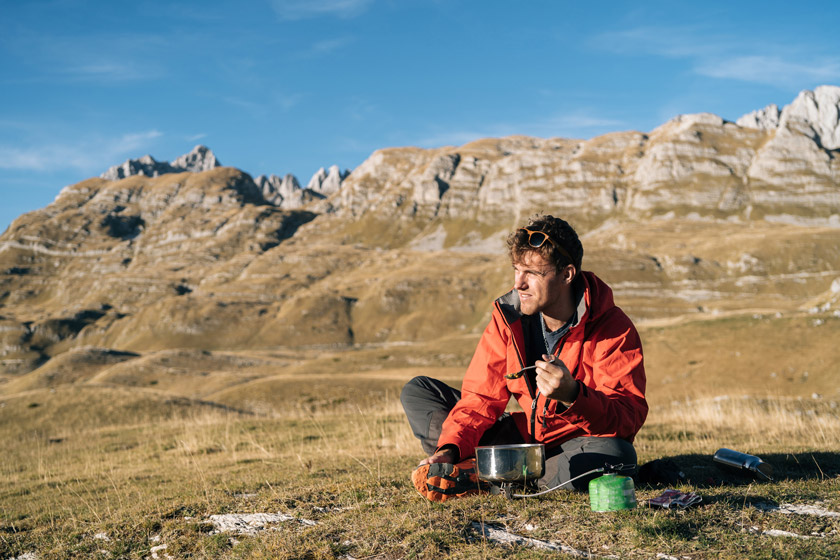
Getty: AscentXmedia
Unfortunately, food takes up space and adds weight to a pack just like water. The durations of survival situations can greatly vary, with some timelines stretching quite a bit. What first seems like a situation that should only last a few hours can quickly turn into days.
There are plenty of advancements out there to shrink down and dehydrate food for camping, but they usually involve camp stoves and water. Do you have enough non-perishable food items in your pack that you'd be able to consume a minimum amount of calories? It's easy to look past this, especially if you're relying on dehydrated food packs. Also, it's not always impossible to forage for wild food. Take some time to learn what plants are safe to consume in any area you plan to explore to give yourself one more backup should the need arise.
The biggest thing to remember is that a survival situation doesn't have to be the end. If you take these reminders to heart, you'll be setting yourself up for a reasonable expectation of survival in most circumstances. Let people know where you plan to be and for how long. Include a communications device in your backcountry supplies, and work your way up to traveling farther for longer periods of time into the wilderness. Keeping a clear mind is paramount in any survival situation.
